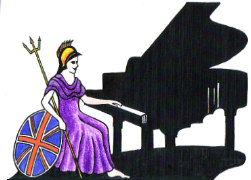Teachers, Accompanists and Piano Entertainers in the UK

UK Piano Page

Browse Locations Northern Ireland » County Londonderry » Derry
17a Electric Ln
Brixton, London SW9 8LA
England
South London Piano Moving is a friendly and
20 Red Lion St
Holborn, London WC1R 4PQ
England
North London Piano Moving professional team can
Kensington, London SW5
England
Kensington Piano removals and disposals operating
City of London, London W6
England
W6-Hammersmith piano removals and disposals.
Camden Town, London WC1
England
Westminster,Central London piano moving and
Music Festival for performers and guests Our 10th
18-06-2022 12:30PM
The Morecambe Bay Piano Group was set up to extend
11-12-2021 01:00PM
The Morecambe Bay Piano Group was set up to extend
08-01-2022 01:00PM
The Morecambe Bay Piano Group was set up to extend
12-02-2022 01:00PM
Polyester and Pianos.
Polyester began as a group of polymers in W.H. Carothers' laboratory. Carothers was working for DuPont at the time when he discovered that alcohols and carboxyl acids could be successfully combined to form fibres.
Polyester as a polish is a three-component paint that utilizes the resin, catalyst and accelerant. Thanks to its tight molecular structure, polyester has a solid content which gives the product superior mechanical and chemical resistance to scratches
The application of Polyester finishes requires specialized equipment and machinery to produce a quality product. Polyester is specified when high scratch resistance and 100% sheen are needed.
Cleaning Polyester on Pianos
For everyday cleaning, wipe your piano with a clean, damp (not wet) cloth, followed by a clean dry cloth. If more stubborn soils do get on the finish, you may try dipping your cloth in a mild soap and water solution before wiping, and then follow that with a cloth dampened in clear water, and then the dry cloth.